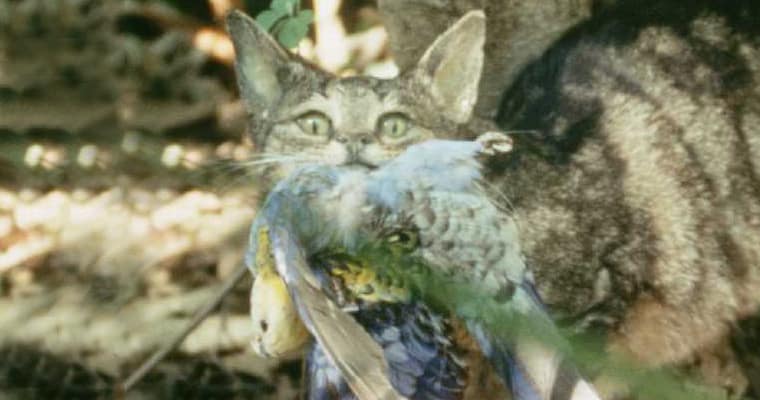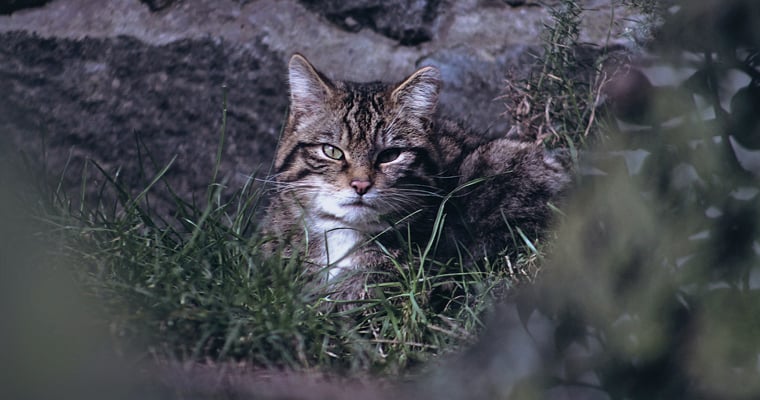Australia has a cat problem. After being introduced in 1788, feral cats now number between 2.1 – 6.3 million depending on rainfall conditions, and there are another 3.8 million pet cats in our neighbourhoods.
Together, they kill over 2 billion animals every single year. Most of those are native. And no matter how much we adore them, we can’t escape the fact that our pet cats that are allowed to roam are responsible for over 500 million of those deaths.
The combined impacts of feral and roaming cats have already helped push 27 native animals into extinction, including a long-forgotten mainland parrot.
Paradise lost
The paradise parrot barely even made it into the 1900s.
A combination of grazing pressure, changed fire regimes and cats made it the only mainland bird species that has gone extinct in Australia since colonisation.
During the early 20th Century, areas were protected for nature mainly when that nature looked aesthetically pleasing or provided some sort of recreational benefit. The open grassy woodlands paradise parrots called home in Queensland’s Darling Downs ticked neither box. So, even when conservationists knew the species was about to go extinct, there was never any hope about getting its habitat converted back from the grazing land it had been turned into.
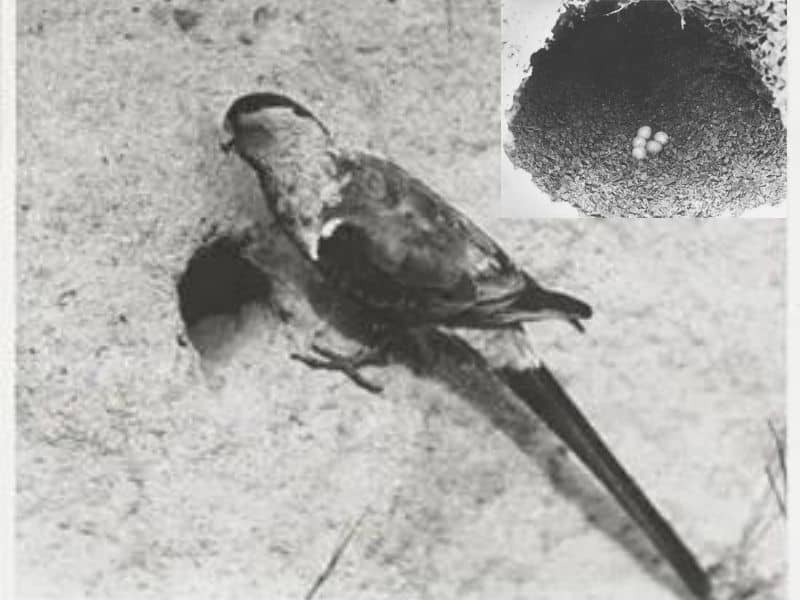
A loss of Indigenous land management ensured the impacts of colonisation were felt even in areas not directly disturbed by grazing. Throughout the 1800s, potentially tens of thousands of Indigenous people were killed and many thousands more were dispossessed of their lands. That meant Indigenous fire usage was suddenly and radically changed across much of the continent, which turned out to be deadly for the paradise parrot.
Feral and roaming cats then served as the clean-up crew for any paradise parrots that had managed to weather these two dramatic changes to their habitats. While foxes also played a small role, conservation scientists estimate that cats alone ended up contributing to the extinction of paradise parrots equally as much as the change in fire regimes.
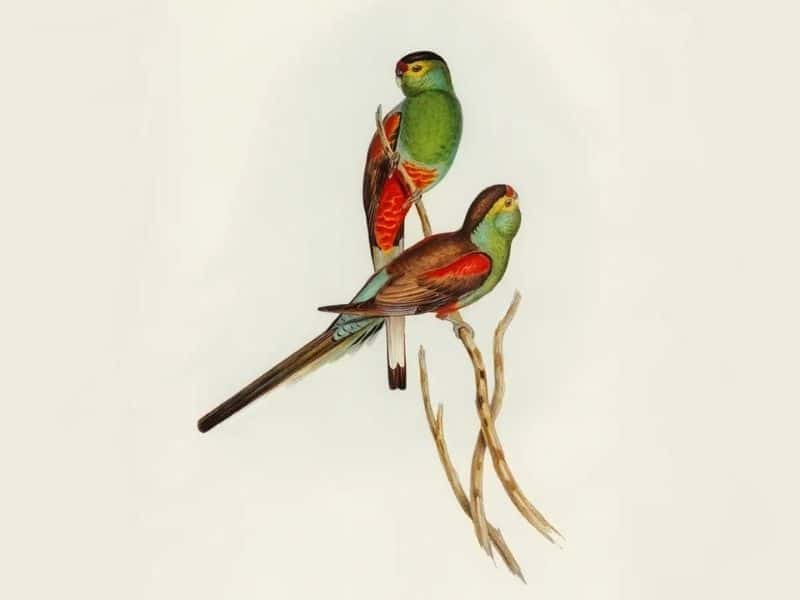
But to see the real damage cats can do in this country, we only have to look at these two little native mice.
Hopping into extinction
Subfossil records suggest the long-tailed hopping-mouse and short-tailed hopping-mouse once covered a broad area over the central and western arid zones of the continent.
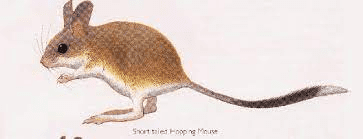
Despite their range, neither have been recorded since 1901 so we know little about their biology. It’s thought the long-tailed hopping mouse used to dig burrows, using excess soil to construct above ground layers that collected dew and moisture in the early hours of the day as a water source and fed on a diet similar to other comparable species today.
The NT Government’s profiles on the two species says they were the largest of the 10 hopping-mice that were bouncing around Australia prior to colonisation. Weighing in at a mammoth 100 grams, they were twice the weight of any of our remaining hopping mice.
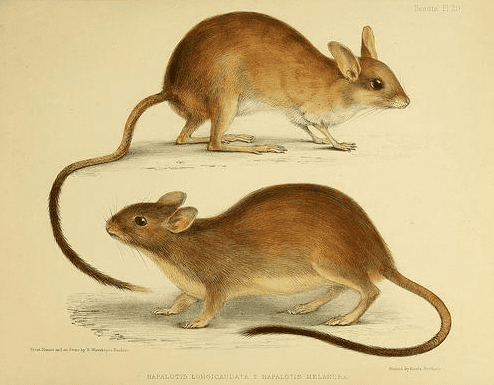
A brilliant peer-reviewed article released in 2019 analysed available evidence on the causes of the 99 native species that are known to have gone extinct since colonisation. They combined that evidence with the expertise of the conservation scientists who authored the paper to actually estimate the percentage role that all known threats contributed to each of those extinctions.
Thanks to their work in that article, we can report that feral and roaming cats are estimated to have been 85% responsible for the extinction of the long-tailed hopping mouse and 90% responsible for the extinction of the short-tailed hopping-mouse. Grazing pressure and changed fire regimes were responsible for the remaining impact.
Cats’ black book
The full list of native animals cats have played a major role in sending extinct since Australia’s colonisation numbers 27 species. It includes native mice, rats, potoroos, bandicoots, a bilby, wallabies, bettongs and a couple of birds.
Here’s the full list of species, accompanied by the relative contribution cats are estimated to have had to their extinctions:
| Extinct native species | Relative contribution from cats to its extinction |
|---|---|
| Short-tailed hopping-mouse | 90% |
| Long-tailed hopping-mouse | 85% |
| Broad-faced potoroo | 75% |
| South-eastern striped bandicoot | 75% |
| Marl | 75% |
| Liverpool Plains striped bandicoot | 75% |
| Large-eared hopping-mouse | 75% |
| Capricorn rabbit-rat | 75% |
| Darling Downs hopping-mouse | 72.5% |
| Long-eared mouse | 70% |
| Nullarbor dwarf bettong | 70% |
| Lesser stick-nest rat | 65% |
| White-footed rabbit-rat | 65% |
| Broad-cheeked hopping-mouse | 60% |
| Yallara (lesser bilby) | 60% |
| Blue-grey mouse | 50% |
| Desert bandicoot | 50% |
| Yirratji (northern pig-footed bandicoot) | 45% |
| Pig-footed bandicoot | 45% |
| Kuluwarri (central hare-wallaby) | 42.5% |
| Nullabor barred bandicoot | 40% |
| Desert rat-kangaroo | 40% |
| Desert bettong | 40% |
| Eastern hare-wallaby | 30% |
| Crescent nailtail wallaby | 27.5% |
| Paradise parrot | 15% |
| White-chested white-eye | 5% |
And these are only the animals whose extinction cats played a substantial role in. There are four more native animal extinctions that cats are implicated in but only played a minimal (less than 5%) role.
Launching our new major campaign
It’s easy to reconcile these losses by thinking that at least the worst cat impacts are behind us. But we are far from being out of the woods. There are now 124 more native animals that are imperilled by cats and listed as threatened with extinction.
That is why we are launching a national campaign to stop feral and roaming cats driving native species into extinction. Click here to see what actions we are calling for and to support us as we launch what will become one of the Invasive Species Council’s core campaigns.
The “black book” of extinctions which cats have played a role in makes for dim reading, and there are so many native species edging closer and closer to being added to its pages. This is an issue where there is room to make an enormous impact for Australian wildlife. We have the track-record, we have the right people and we have the science on our side. All we need now to make it happen is your support.

